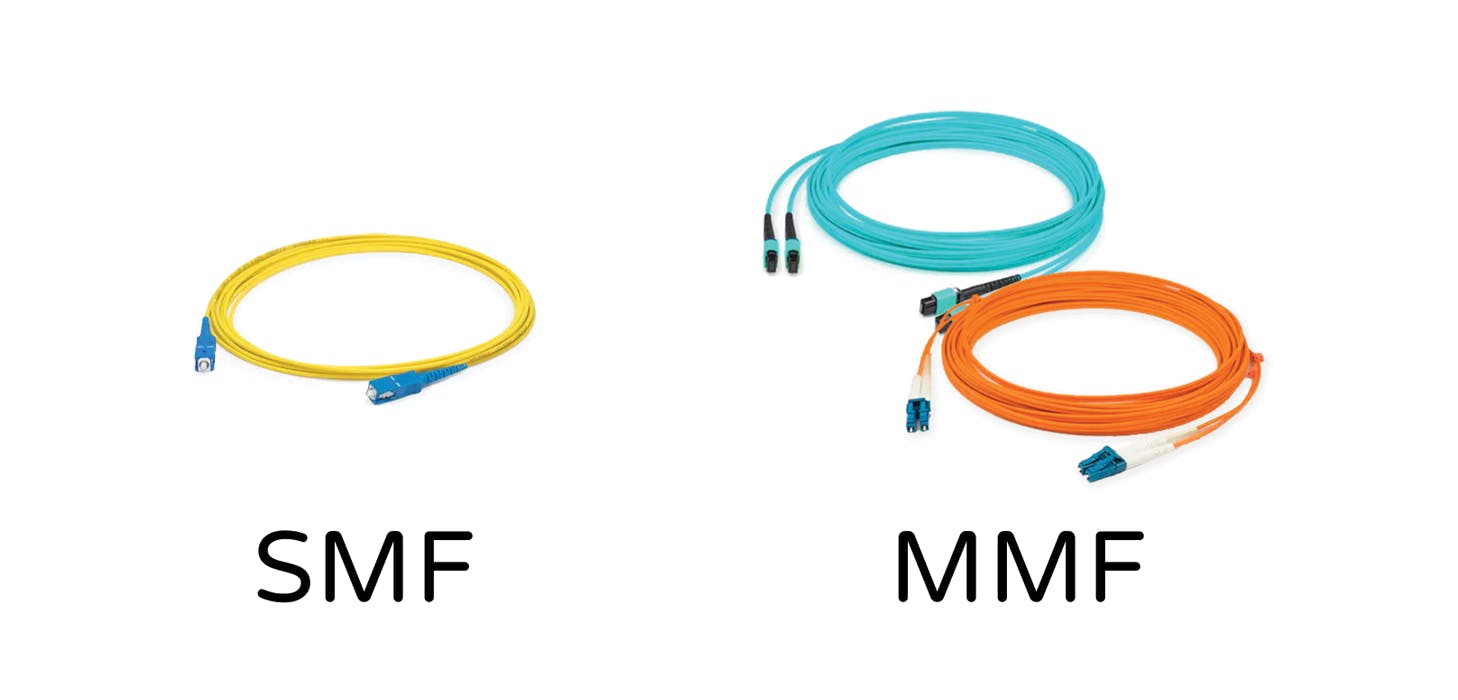Understanding MMF Bedeutung: The Differences Between MMF Fiber and SMF Fiber
When it comes to fiber optics, understanding the key terms and technology is crucial for making smart choices. One important term is “MMF Bedeutung,” which means the “meaning of MMF” in German. MMF stands for Multimode Fiber, a fiber optic cable used in various communication systems. Along with MMF, there’s another important type of fiber called singlemode fiber (SMF). In this article, we’ll explain what MMF Bedeutung is, compare MMF Fiber with SMF Fiber, and discuss where each is used.
What Does MMF Bedeutung Mean?
MMF Bedeutung refers to the importance and role of multimode fiber in optical communication. Multimode fiber has a larger core that allows multiple light rays, or modes, to travel through it simultaneously. This larger core, typically around 50 or 62.5 micrometers, lets the light take different paths as it moves down the fiber. MMF’s “Bedeutung,” or significance, lies in its ability to transmit data quickly over short distances, making it a great choice for places like data centers and office networks.
What is MMF fiber and where is it used?
Short-range communication is the primary purpose of MMF Fiber. It performs best over distances ranging from a few meters to a few hundred meters. The larger core of MMF fiber makes it perfect for handling large amounts of data over short distances. Here are some common uses:
- Data Centers: MMF Fiber is often used to connect servers, storage devices, and networking equipment within data centers. Fast data transfers over short distances are precisely what these environments require.
- Local Area Networks (LANs): MMF Fiber is used in office buildings and campus networks to provide fast and reliable connections between different devices.
- Audio/Video Transmission: MMF Fiber facilitates the rapid and reliable transmission of large amounts of audio and video data over short distances.

What is SMF fiber and where is it used?
Long-distance communication is the intended use for SMF fiber, also known as single-mode fiber. Unlike MMF Fiber, SMF Fiber has a much smaller core, usually around 8 to 10 micrometers. This small core allows only a single light ray, or mode, to travel through the fiber at a time. Because of this, SMF Fiber experiences less signal loss and can transmit data over much longer distances than MMF Fiber. Here are a few of its common uses:
- Telecommunications: SMF Fiber is the backbone of telecommunications networks, allowing for long-distance communication with minimal signal loss. Undersea cables, long-haul connections, and citywide networks utilize it.
- Internet Service Providers (ISPs) use SMF Fiber to deliver high-speed internet to homes and businesses. Its long-distance capabilities make it ideal for connecting customers to the Internet.
- Wide Area Networks (WANs): In large networks that span cities or even countries, SMF Fiber connects different network locations, ensuring reliable and rapid data transmission over long distances.
Comparing MMF Fiber and SMF Fiber
When you compare MMF Fiber and SMF Fiber, several key differences come into play:
- Core Size: MMF Fiber has a larger core that allows multiple light paths, while SMF Fiber has a smaller core that supports only one light path.
- Distance: SMF Fiber is better for long-distance transmission, often reaching several kilometers without losing signal quality. MMF fiber is better suited for short distances, typically a few hundred meters.
- Bandwidth: MMF Fiber can handle high data rates over short distances, making it ideal for places like data centers. For long-distance communication, SMF fiber is the better option because it maintains signal quality over greater distances.
- Cost: MMF Fiber and its related equipment are generally cheaper than SMF Fiber, making it a cost-effective option for short-distance applications.
- Applications: MMF Fiber is commonly used in data centers, LANs, and short-range audio/video transmission, while SMF Fiber is used in telecommunications, long-haul networks, and internet services.
How to Choose Between MMF Fiber and SMF Fiber
When deciding whether to use MMF or SMF fiber, consider these factors:
- Distance: If you need to transmit data over long distances, SMF Fiber is the best choice because it keeps the signal strong over long ranges.
- Bandwidth: For high-bandwidth applications in a small area, like a data center, MMF Fiber is more appropriate because it can handle a lot of data quickly.
- Budget: If cost is a concern, MMF Fiber is usually more affordable for short-distance, high-bandwidth needs, while SMF Fiber is necessary for long-distance communication.
- Future Needs: Think about future upgrades and technological changes. SMF Fiber might offer flexibility for future needs, especially if your network needs to grow or handle faster speeds.

Conclusion
Understanding MMF Bedeutung and the differences between MMF Fiber and SMF Fiber is important for anyone working with optical networks. Each type of fiber has its strengths and weaknesses, so it’s crucial to choose the right one for your specific needs.
MMF Fiber is ideal for short-distance, high-bandwidth applications like data centers and office networks. SMF Fiber is ideal for long-distance communication, such as in telecommunications and wide-area networks.
By knowing the meaning of MMF and the key differences between MMF Fiber and SMF Fiber, you can make smart decisions that keep your network running smoothly and efficiently.
--------------------------------
Guestbeat.com Notice!
Audience discretion is needed, Read TOS.
Submit Guest Post / Read Latest / Category List
App & Rate-Us / Subscribe Daily Newsletter (FREE)
